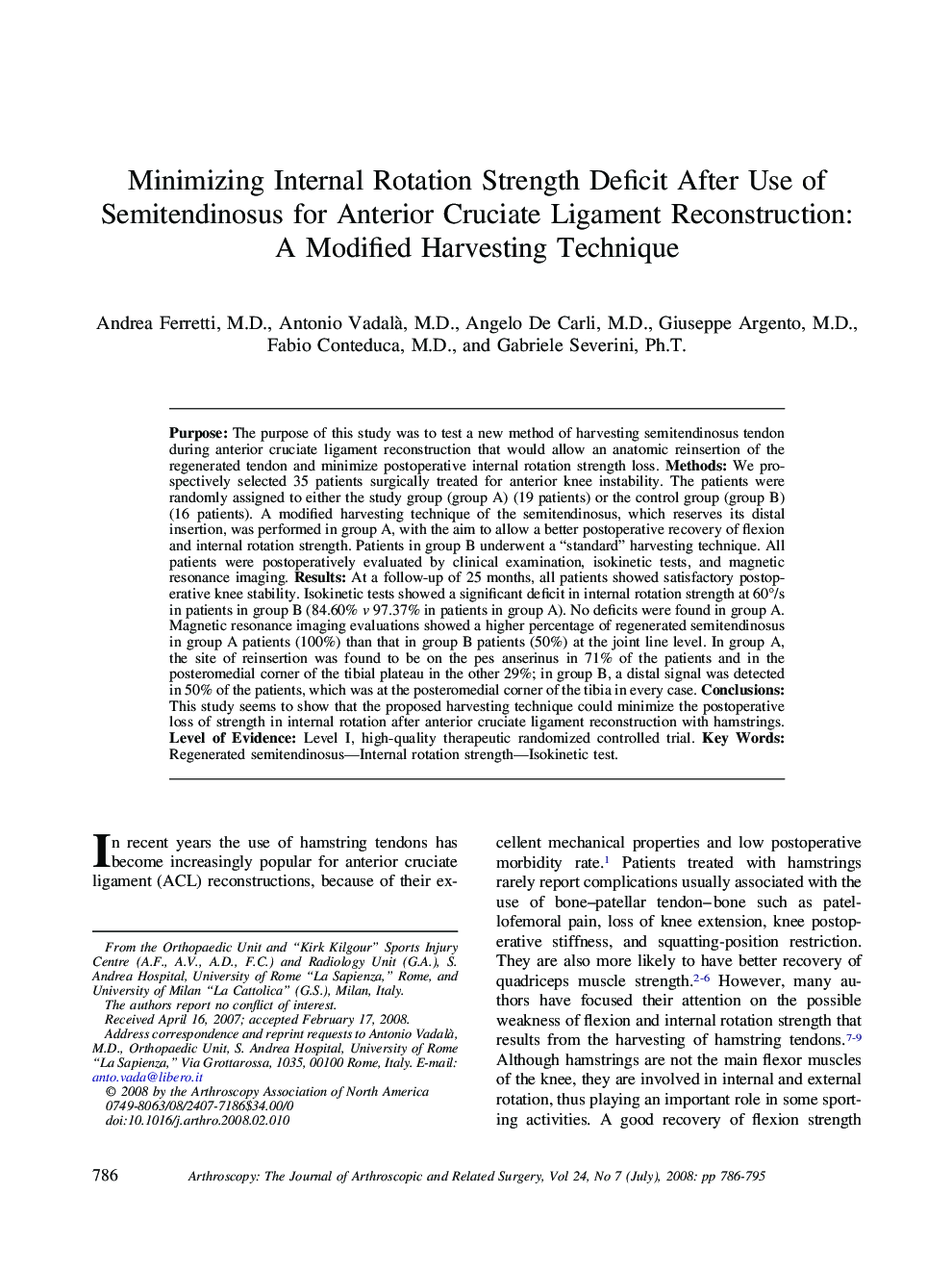| Article ID | Journal | Published Year | Pages | File Type |
|---|---|---|---|---|
| 4046018 | Arthroscopy: The Journal of Arthroscopic & Related Surgery | 2008 | 10 Pages |
Purpose: The purpose of this study was to test a new method of harvesting semitendinosus tendon during anterior cruciate ligament reconstruction that would allow an anatomic reinsertion of the regenerated tendon and minimize postoperative internal rotation strength loss. Methods: We prospectively selected 35 patients surgically treated for anterior knee instability. The patients were randomly assigned to either the study group (group A) (19 patients) or the control group (group B) (16 patients). A modified harvesting technique of the semitendinosus, which reserves its distal insertion, was performed in group A, with the aim to allow a better postoperative recovery of flexion and internal rotation strength. Patients in group B underwent a “standard” harvesting technique. All patients were postoperatively evaluated by clinical examination, isokinetic tests, and magnetic resonance imaging. Results: At a follow-up of 25 months, all patients showed satisfactory postoperative knee stability. Isokinetic tests showed a significant deficit in internal rotation strength at 60°/s in patients in group B (84.60% v 97.37% in patients in group A). No deficits were found in group A. Magnetic resonance imaging evaluations showed a higher percentage of regenerated semitendinosus in group A patients (100%) than that in group B patients (50%) at the joint line level. In group A, the site of reinsertion was found to be on the pes anserinus in 71% of the patients and in the posteromedial corner of the tibial plateau in the other 29%; in group B, a distal signal was detected in 50% of the patients, which was at the posteromedial corner of the tibia in every case. Conclusions: This study seems to show that the proposed harvesting technique could minimize the postoperative loss of strength in internal rotation after anterior cruciate ligament reconstruction with hamstrings. Level of Evidence: Level I, high-quality therapeutic randomized controlled trial.
